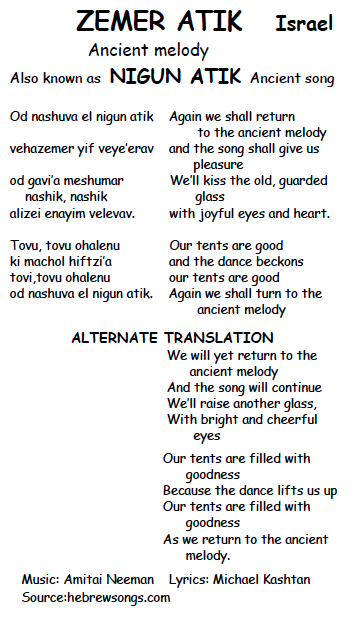*2nd Generation dance. A dance that developed and was disseminated in a non-traditional way. 2G dances are specific – have a fixed format designed to correspond with the arrangement of a particular recording., whereas 1G dances are generic – have a shorter sequence that works with live music – where many different songs are played and arrangements vary according to the tastes of musicians and dancers. For more on the differences between 1st & 2nd G dances click here.
ZEMER ATIK Also known as NIGUN ATIK, means “old melody”. This dance was one of the first instances (1955) of an Israeli choreographer incorporating Yiddish moves into an Israeli dance. Previously, Yiddish/Hassidic culture was seen as not ‘progressive’ for the image of Israel choreographers wanted to project.
Here’s the choreographer herself, Rivka Shturman, leading her dance. The video is a tribute to Rivka, one of the most prolific choreographers of “classic” Israeli dances. Nigun Atik starts at the 5:22 mark.
Notice a couple of differences with the standard North American dance (shown below). The hand hold is the same, but there’s only one clap, then one more in the Rivka version. Going into the centre, both hands are raised high, whereas in N.A., we tend to sway from side to side. Also see the seldom performed second half of the dance, where people break into couples.
Now look at a modern Israeli teaching. This time the hands are held down in the circling, and are slowly raised while going to centre.
Also note the use of drums to teach, and the modern arrangement of the melody, sung by Israel’s most popular singer, Yardena Arazi, transforming an Ashkenazi dance to suit Israel’s majority Mizrahi culture.
For more on the Ashkenazi/Mizrahi nature of Israel, see


